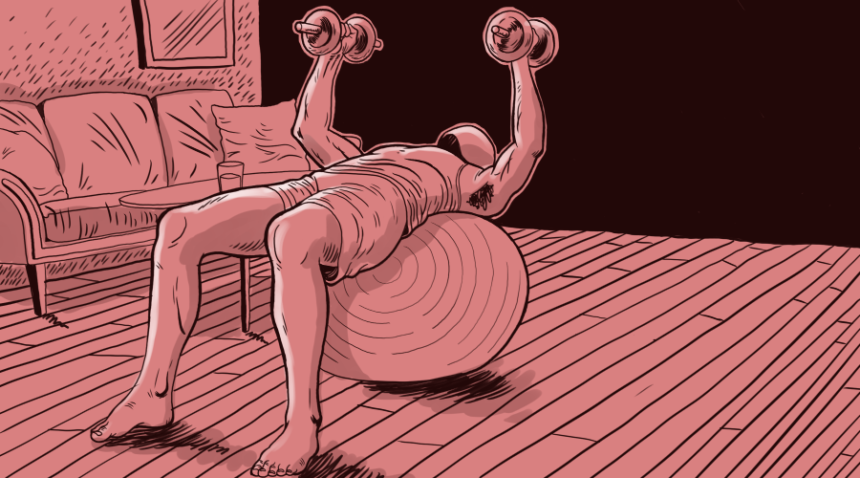If joining a gym doesn’t work for your budget or schedule, there are plenty of ways to get a great workout at home. Whether you’ve converted an extra room into a workout zone with a variety of equipment or are just beginning to explore your exercise options after a break, it’s important to take the proper steps to prevent injuries. UNC Health physical therapist Jeff O’Laughlin, PT, DPT, offers these three tips.
1. Pace yourself.
If you’ve taken a break from exercise or have just started working out, take it slow.
“People tend to be really motivated right off the bat if they’re going to start something new, and they set these really high, and in some cases unrealistic, expectations,” O’Laughlin says. “And when they increase in extreme amounts, they get pain and risk injury.”
Instead, pace yourself. Don’t go out and run a 10K your first day if you’re not used to running regularly. If you want to take up running, begin walking first, then alternate between running and walking in the same session. Gradually start running for longer periods, and eventually you can build up to running the entire time.
The key is to set smaller goals. For example, set a goal of working out for 20 minutes three times a week and gradually build up to longer workouts five to six days a week.
“Lots of small changes will add up to bigger change over time; versus bigger changes that happen all at once and can’t be maintained,” O’Laughlin says.
2. Vary your workouts.
Doing the same exercise over and over leads to overtraining and can increase your risk of injury, O’Laughlin says.
Instead, incorporate different activities in your fitness routine. Cross-training not only helps with injury prevention but also increases your performance and overall fitness. If you’re a runner, try adding a day of core work, strength training and some different forms of cardio, like a long bike ride with your kids, to mix it up.
This allows you to spend time building other muscles in your body, making it stronger overall. By balancing your weaker muscles with your stronger ones, you’ll also help to reduce your chance of injury.
3. Listen to your body.
Some muscle soreness and fatigue is normal, especially if you’ve gotten out of the habit of regular exercise. However, it’s important that you listen to your body.
“If you’re doing things like strength training or running and you are not sore in your muscles the following day, it’s OK to push a little bit more,” O’Laughlin says.
But the “little bit more” part is crucial. A good general rule of thumb is to increase by 10 percent, O’Laughlin says—whether that’s mileage or reps of an exercise.
“It’s important not to go from 25 pounds to 50 pounds. That’s an increase of 100 percent,” O’Laughlin says. “Or even increasing from 1 mile to 2 is an increase of 100 percent.”
If you’re really sore or your soreness persists more than that following day, it’s important to scale back and decrease activity.
“That soreness is your body’s natural response of repairing those muscles to build them back up to tolerate that activity again,” O’Laughlin says. “So if you just continually work the same muscles through soreness over and over again, that leads over time to overtraining and injury.”
If you have a sustained level of pain after 48 hours or you’re feeling sharp, shooting sensations, seek medical attention.
A great resource is your local physical therapist. Physical therapists are movement experts focused on function. They can help set you up with an individual plan for your specific goals.
To learn more about workout injury prevention, talk to your doctor. If you need a doctor, find one near you.

